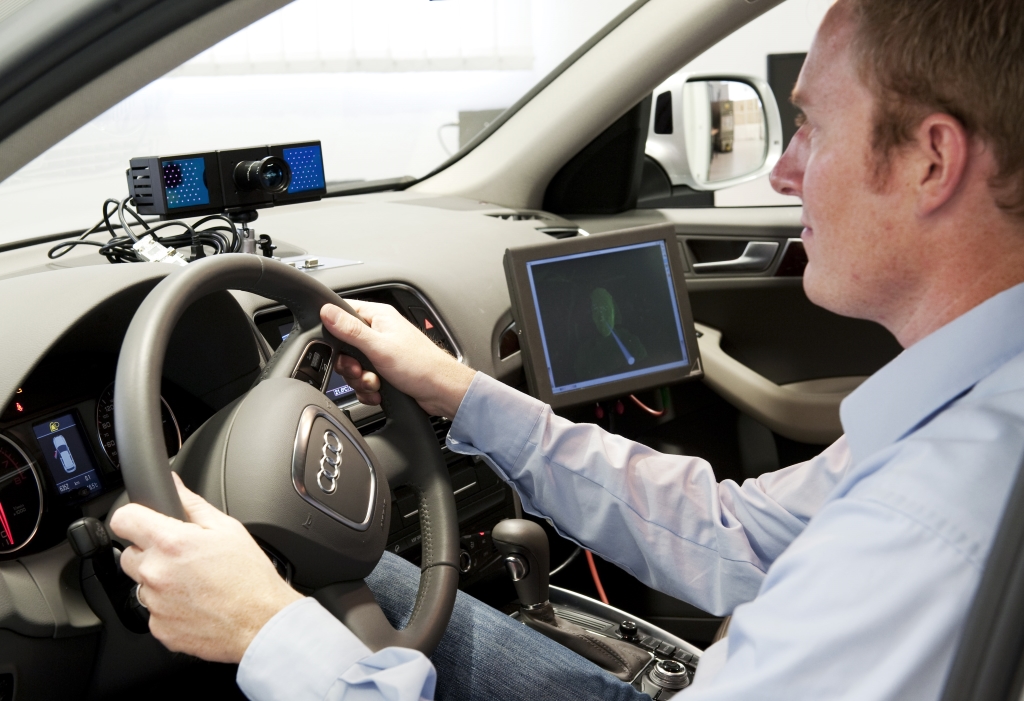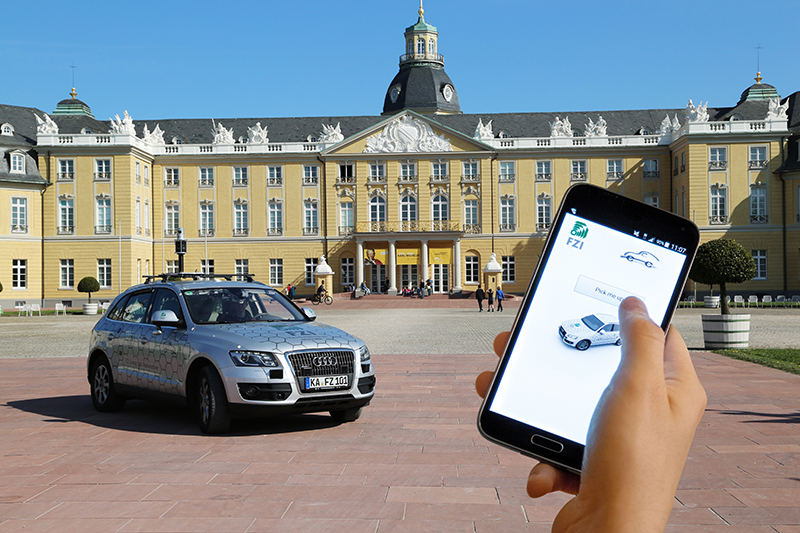Automated and Autonomous Driving
Driver assistance systems today provide significant contributions to comfort, safety and energy efficiency. Intelligent systems analyse the driving situation, and not only do they provide information to the driver, they actively intervene as well. A vehicle, for example, is actively steered back into track when it leaves its lane unintentionally. The automatic cruise control influences the throttle and brake to increase comfort, and the emergency brake assistant provides for an even greater safety. All the while, the driver maintains the highest control.
The integration of cameras, radar sensors, and ultrasonic sensors allow for an increasingly comprehensive coverage of the surroundings. In addition to safety and efficiency, autonomous driving makes lifelong mobility possible for all despite ever-changing social boundary conditions. Through autonomous driving, elderly people who no longer trust themselves on high-traffic routes will still be able to take part in road traffic. Rural regions, in which local transport no longer exists for profitability reasons, can be brought back to urban life using autonomous units which are much cheaper and smaller than the traditional intercity bus. Young people who have yet to acquire their driving licenses can participate more in educational, cultural and leisure activities.
Soon, taxis and rental vehicles can be developed into autonomous means of individual transport. They pick up the passenger, drive him to the desired destination, drop him off, and carry out self-diagnosis and, if necessary, maintenance work such as charging. In freight and personal transport, automated and later autonomous vehicles will be intelligently combined into units with the same route over a certain period of time.
This development is made possible through advances and innovations in technologies, applications and processes. Further developments in image evaluation and scene understanding through powerful and robust algorithms enable an optimized recognition of the environment. To process these vast amounts of gathered data, progressively stronger integrated and parallelized electrical or electronic topologies and hardware architectures that increasingly meet the requirements for the robustness, data protection and failure or transmission reliability of a networked embedded system are developed.

Interior view of an autonomous research vehicle with a safety driver
The exploration of methods and algorithms for cognitive driving and new parameter identification and estimation procedures through the (automatic) calibration of sensors or vehicle dynamics allows for predictive driving. In particular, multisensorial perception, machine situation comprehension and machine learning in the application context are further factors to be mentioned. Innovative processes and methods for the evaluation and validation of cognitive vehicles facilitate the development of the previously described applications as well as the design of new applications and services for mobility.
The primary goal of the initialization project is to further develop autonomous driving in the context of potential applications to bridge the gap towards industrial implementation through interdisciplinary and open research cooperation. This relates particularly to the evaluation of the functionality of driverless, autonomous individual vehicles to ensure a "fail-safe/ fail-operational" operation in the 24/7 mode. Especially for autonomous driving, a functional and safety concept for the entire system (vehicle, communication and call function) must be examined. In addition to functional security, this also includes the security of data interfaces (privacy, authenticity, etc.). Furthermore, human-vehicle cooperation concepts are to be integrated into the system and analyzed as new business models.
At the end of the 2-year pilot phase described here, an electric vehicle will drive on KIT’s Campus East without a safety driver. To demonstrate the achievement of the project targets, a vehicle with a mobile telephone (or the likes) will be called so that the passenger can simply enter the empty vehicle at the retrieval location and be brought to the desired location.

Exemplary illustration: calling of the autonomous taxi per app
This taxi expands the mobility of all users. This is especially true when it is used by people with reduced mobility who could not drive on their own.
In the case that the function does not provide plausible results, the vehicle automatically enters a fail-operational mode. In the demonstrator, this is illustrated with the examples of the technical failure of a camera or its dirtying.
The results of the demonstrator and the development processes will be linked to further initialization projects such as "Connected Mobility", "Mobility in the Urban Environment" and "Traffic and Mobility in a Changing Society".



